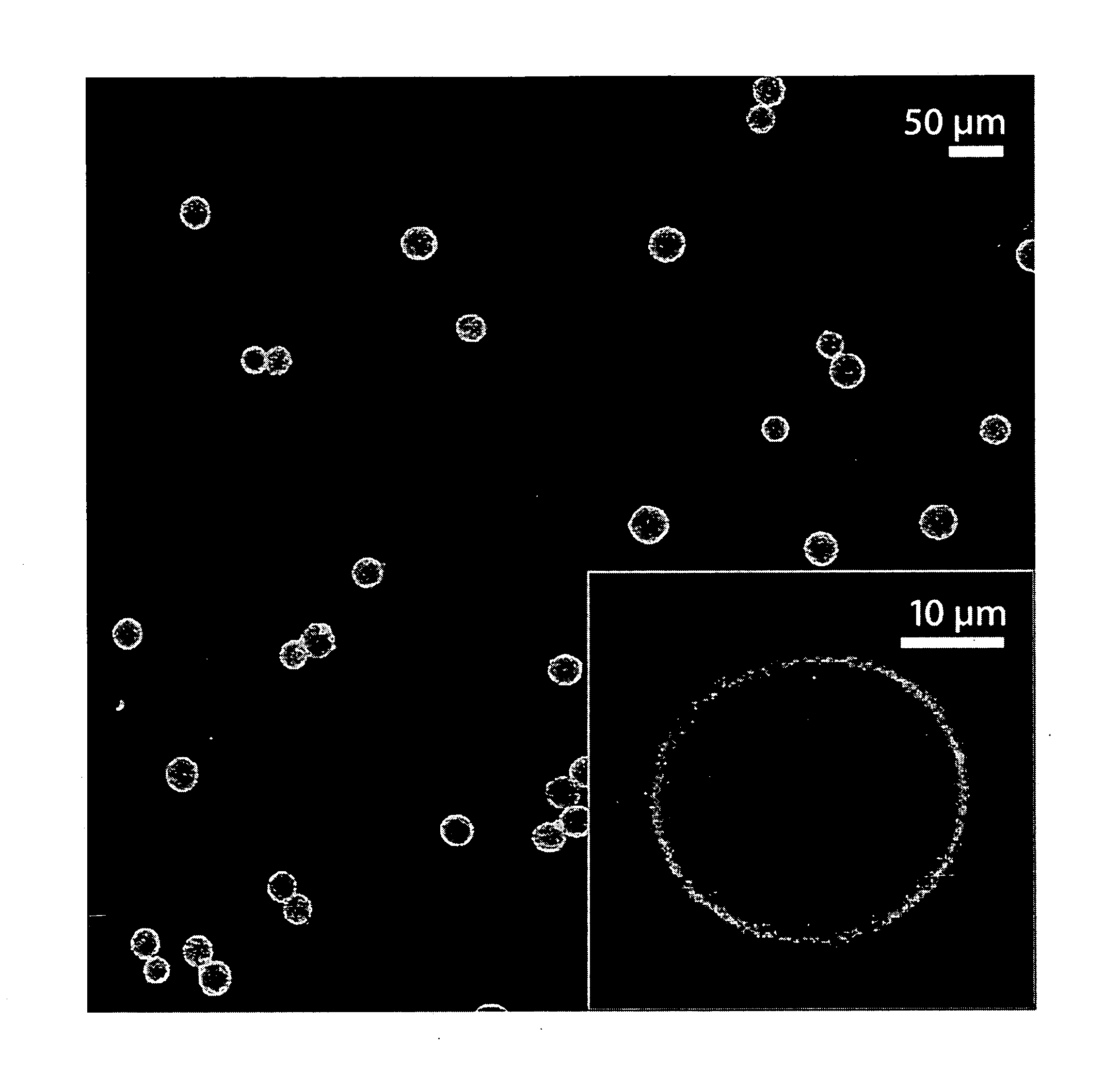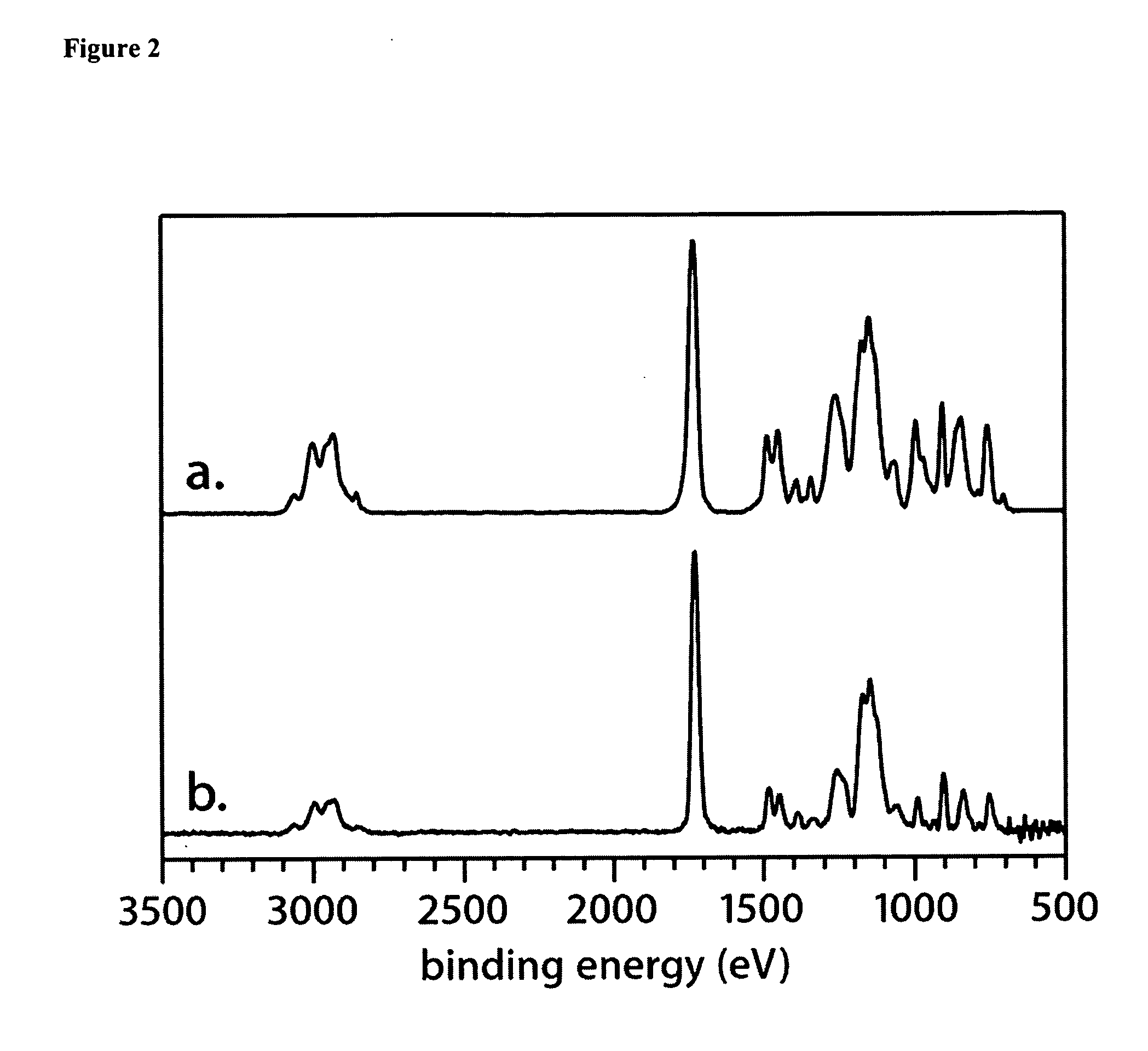Initiated chemical vapor deposition of vinyl polymers for the encapsulation of particles
a technology of vinyl polymers and chemical vapor deposition, which is applied in the field of initiating chemical vapor deposition of vinyl polymers for the encapsulation of particles, can solve the problems of limited methods of deposited inorganic films, and achieve the effect of high-quality functional polymer coatings
- Summary
- Abstract
- Description
- Claims
- Application Information
AI Technical Summary
Benefits of technology
Problems solved by technology
Method used
Image
Examples
example 1
iCVD Encapsulation
[0185] The iCVD setup can be configured in different ways. It can be set up as a one-dimensional flow-through system that has been detailed elsewhere (e.g., FIG. 7). It can alternatively be set up to allow particle agitation using a rotary mechanism to create a rotating particle bed (e.g., FIG. 8). In one example, glycidyl methacrylate (Aldrich) and tert-amyl peroxide (Aldrich) were used as-received and fed into the coating chamber at 3.0 and 0.3 sccm, respectively, using precision mass flow controllers (MKS Instruments). The liquid monomer source was heated to 85° C. to generate enough vapor pressure. Pressure was maintained at 0.35 Torr (46.7 Pa) by a downstream throttle valve (MKS Instruments) and a capacitance manometer gauge (MKS Instruments). Vacuum was achieved by a dry pump (iQDP40, BOC Edwards) and a roots blower (WAU-150, Leybold). The initiator was thermally activated using electrically resistive wires heated to 250° C. by a DC power supply (DHP 150-20 ...
example 2
Coating Characterization
[0188] Fourier transform infrared spectroscopy made use of a Thermo Nicolet NEXUS 870 equipped with a DTGS detector. The nanotubes were compressed into KBr pellets and spectra were acquired at 4 cm−1 resolution for 64 scans. Transmission electron microscopy was performed on a JEOL 200 CX at 200 kV. The nanotubes were mounted on Cu grids with a Formvar support stabilized with carbon. X-ray photoelectron spectroscopy was done on a Kratos AXIS Ultra using a monochromatic Al anode at 150 W with charge neutralization. Samples were mounted by pressing the microspheres onto a copper adhesive tape. Survey and high resolution elemental scans were acquired at a pass energy of 160 and 10 eV, respectively. Spectra were fitted using the CasaXPS program and referenced to the C1s peak of the saturated aliphatic hydrocarbons (CH2 / CH3) at 285.00 eV. Scanning electron microscopy was done on an FEI / Philips XL30 FEG ESEM under high vacuum at 12.0 kV. The microspheres were mount...
example 3
Immobilization Experiments
[0189] Hexamethylenediamine (Aldrich) was dissolved in neat ethanol (Aldrich) to form a 0.5 M solution. A vial containing 20 mg of PGMA-coated microspheres in 5 ml of the 0.5 M hexamethylenediamine solution was placed in a 60° C. water bath for 5 h. The microspheres were then isolated and washed 5 times with ethanol to remove any unreacted amine. Similarly, 50 mg of fluorescein-5-thiosemicarbazide (Molecular Probes, Invitrogen) were dissolved in 10 ml of pH 8.0 phosphate buffer. A vial containing 20 mg of PGMA-coated microspheres in 5 ml buffer was placed in a 60° C. water bath for 5 h. The microspheres were then isolated and washed 5 times with pH 7.0 phosphate buffer to remove any unreacted dye. For confocal laser scanning microscopy, a Zeiss LSM 510 with a Zeiss Axiovert 100M microscope was used. Excitation was made with an argon laser (458, 488 and 514 nm) and fluorescence was detected between 505-530 nm. Samples were prepared by drying the fluorescent...
PUM
 Login to View More
Login to View More Abstract
Description
Claims
Application Information
 Login to View More
Login to View More - R&D
- Intellectual Property
- Life Sciences
- Materials
- Tech Scout
- Unparalleled Data Quality
- Higher Quality Content
- 60% Fewer Hallucinations
Browse by: Latest US Patents, China's latest patents, Technical Efficacy Thesaurus, Application Domain, Technology Topic, Popular Technical Reports.
© 2025 PatSnap. All rights reserved.Legal|Privacy policy|Modern Slavery Act Transparency Statement|Sitemap|About US| Contact US: help@patsnap.com



